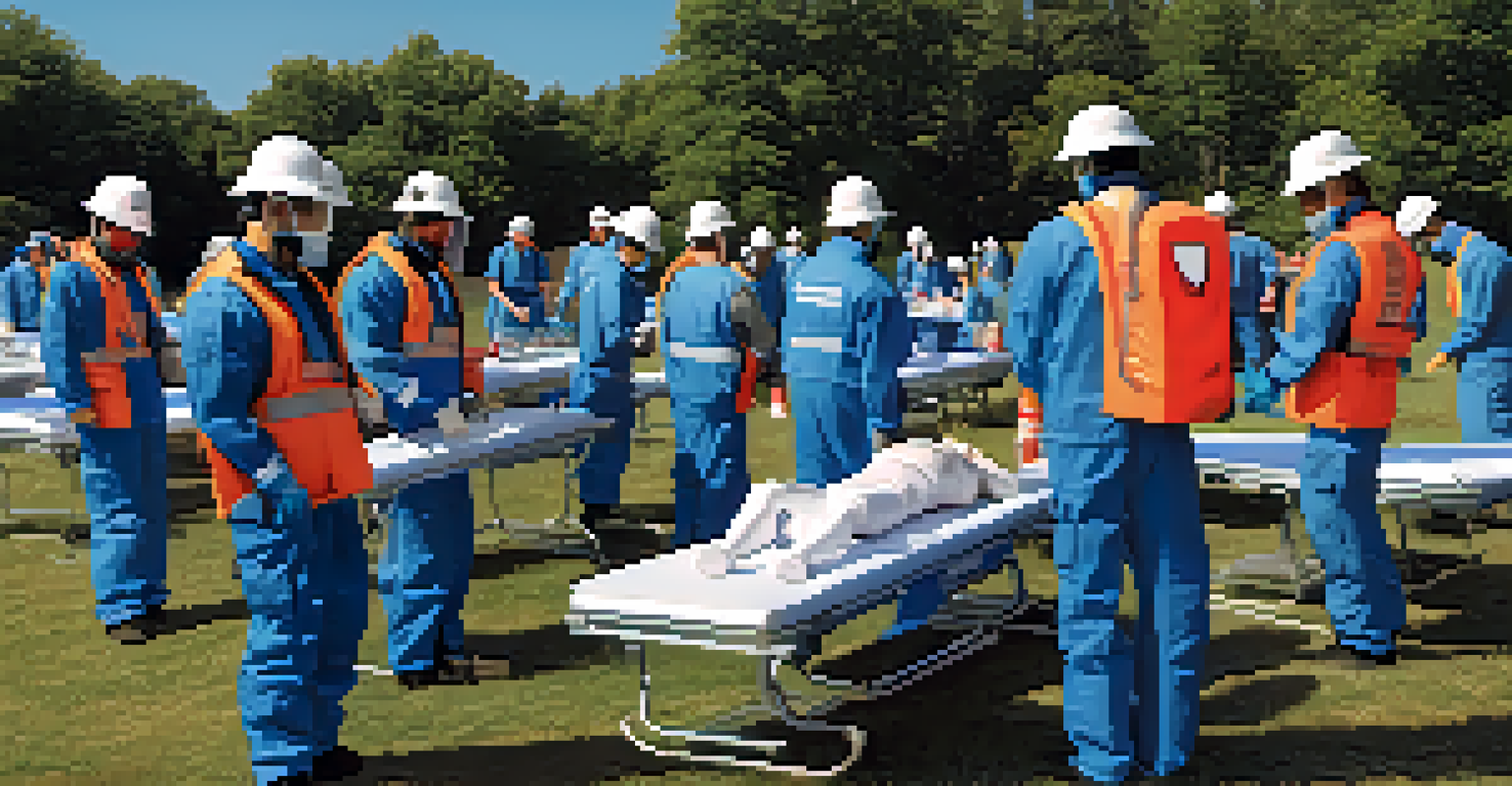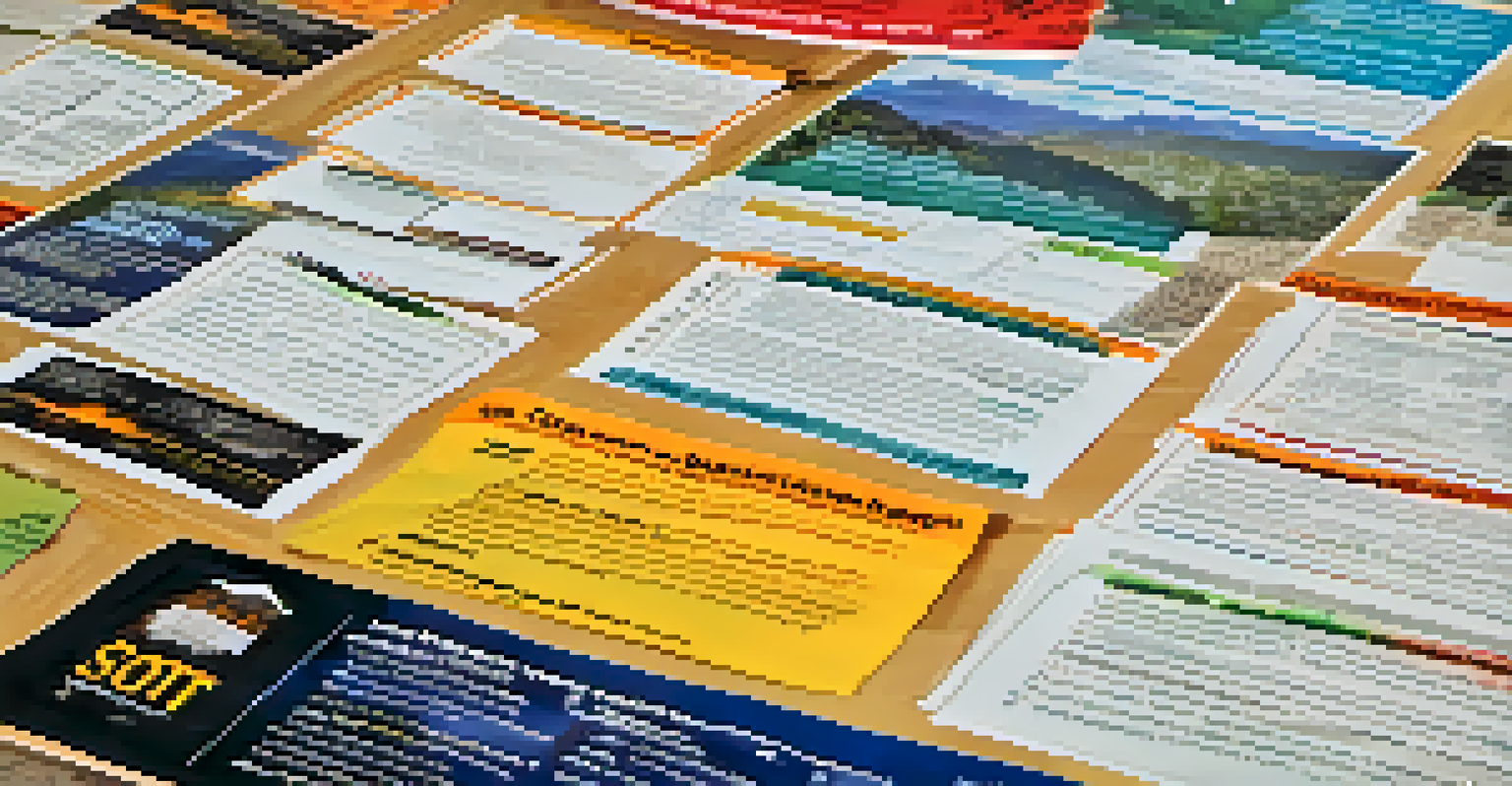Creating a Community Disaster Response Team in San Jose

Understanding the Importance of Disaster Response Teams
In today’s unpredictable world, disasters can strike at any time. Having a dedicated community disaster response team in San Jose can significantly enhance local preparedness and resilience. These teams act as the first line of defense, providing immediate assistance during emergencies while professional responders are on their way.
Disaster preparedness is not a one-time event; it is an ongoing process that requires community engagement and collaboration.
When a disaster occurs, it’s often the community itself that can offer the most immediate help. Community members understand their neighborhoods, resources, and vulnerabilities better than anyone else. This local knowledge is invaluable in effectively coordinating response efforts and ensuring that aid reaches those most in need.
Moreover, being part of a disaster response team fosters a sense of unity and purpose among community members. It encourages collaboration, builds relationships, and empowers individuals to take charge in critical situations, ultimately creating a stronger, more connected San Jose.
Identifying Key Community Members to Involve
The success of a disaster response team hinges on the involvement of diverse community members. Consider engaging local residents, business owners, and representatives from organizations like schools, churches, and neighborhood associations. Each of these groups brings unique skills and perspectives that can enhance the team's effectiveness.

Think about including individuals with specialized training, such as medical professionals, firefighters, or emergency responders. Their expertise can be invaluable during emergencies, providing critical support and guidance. Additionally, having multilingual members can help bridge communication gaps and ensure that all community voices are heard.
Community Teams Enhance Resilience
Dedicated disaster response teams in San Jose leverage local knowledge for immediate assistance during emergencies.
Don’t forget to tap into the energy of local youth and students. Engaging younger community members not only empowers them but also ensures that the next generation is prepared to handle disasters. Their enthusiasm and fresh ideas can inject new life into the team and its initiatives.
Developing a Clear Mission and Goals
Once you've assembled your team, it's crucial to establish a clear mission and set specific goals. A well-defined mission statement serves as a guiding light, helping team members understand their purpose and the impact they aim to achieve. For example, your mission could be to enhance community resilience through training and resource sharing.
The greatest resource a community can have in times of disaster is the strength and resilience of its people.
Setting measurable goals makes it easier to track progress and keep the team motivated. Goals could include conducting regular training sessions, organizing community drills, or even creating a disaster resource guide for residents. Each achievement, no matter how small, builds confidence and fosters a proactive mindset.
Encourage team members to contribute their ideas to the mission and goals. This collaborative approach not only fosters ownership but also ensures that everyone is on the same page and feels invested in the team's success.
Creating a Training and Preparedness Plan
Training is one of the cornerstones of an effective disaster response team. Start by identifying essential skills that team members need, such as first aid, CPR, search and rescue techniques, and effective communication strategies. Local organizations and agencies often offer workshops and training programs tailored to these needs.
Regular practice is vital for maintaining skills and building confidence among team members. Schedule monthly drills or simulations to keep everyone sharp and ready for real-life scenarios. These exercises can also help identify areas for improvement, allowing the team to adapt and grow.
Diverse Members Boost Team Effectiveness
Involving a variety of community members, including professionals and youth, strengthens the disaster response team's capabilities.
In addition to hands-on training, consider developing informational resources, like pamphlets or online materials, that outline best practices for disaster response. Making these resources accessible to the wider community can enhance overall preparedness and ensure that everyone knows what to do in an emergency.
Utilizing Local Resources and Partnerships
Building partnerships with local organizations, businesses, and government agencies can greatly enhance your disaster response team's capabilities. These partnerships can provide access to resources, training, and support that may not be available within the team alone. For instance, collaborating with local fire departments can offer valuable insights into effective emergency response protocols.
Moreover, local businesses might be willing to donate supplies or offer their facilities for team meetings and training. Strengthening these relationships not only boosts your team’s resources but also fosters a sense of community involvement and investment in disaster preparedness.
Don’t overlook the power of social media and local networks. Creating an online presence can help share information, recruit volunteers, and keep the community informed about upcoming training sessions and events. Engaging with the community through various channels ensures that everyone is aware and involved.
Establishing Communication Channels
Effective communication is critical during a disaster, and establishing clear channels is essential for any response team. Consider utilizing tools like group messaging apps, social media, and community alert systems to disseminate information quickly and efficiently. This ensures that all team members can remain informed and coordinated during emergencies.
Regular updates and check-ins with team members help maintain open lines of communication. Scheduling routine meetings allows team members to discuss concerns, share ideas, and plan upcoming activities. This ongoing dialogue strengthens relationships and enhances overall teamwork.
Training and Adaptation are Key
Regular training and ongoing evaluation help disaster response teams remain effective and responsive to changing community needs.
Additionally, ensure that your communication strategy includes ways to reach vulnerable or non-tech-savvy community members. Providing information through flyers, community boards, or local gatherings ensures that everyone stays informed and prepared, regardless of their technological access.
Promoting Community Awareness and Involvement
Creating a disaster response team in San Jose is just the beginning; spreading awareness about its existence and missions is equally important. Host community events, workshops, or informational sessions to educate residents about the team’s objectives and how they can get involved. The more people know, the greater the potential for a robust support network.
Consider engaging local media outlets to share success stories, upcoming training sessions, and community events. Highlighting the team’s efforts not only raises awareness but also encourages more residents to join and support your cause. A well-informed community is more likely to participate and contribute to collective preparedness.

Utilizing social media platforms can further amplify your outreach efforts. Regularly posting updates, tips, and success stories keeps the community informed and engaged, fostering a sense of ownership among residents. The more connected individuals feel to the team, the more likely they are to participate actively.
Evaluating and Adapting Your Response Team
As your disaster response team grows, it’s vital to periodically evaluate its effectiveness. Gather feedback from team members and the community to identify strengths and areas for improvement. This could involve surveys, informal discussions, or after-action reviews following drills or actual responses.
Adaptation is key to an effective response strategy. As community needs change and new challenges arise, your team should be willing to modify its goals, training, and strategies accordingly. Emphasizing flexibility ensures that your team remains relevant and capable of addressing evolving threats.
Celebrate successes and acknowledge challenges as part of the learning process. Recognizing achievements, whether big or small, keeps morale high and encourages continued participation. A strong feedback loop creates a culture of continuous improvement, ultimately leading to a more resilient San Jose.